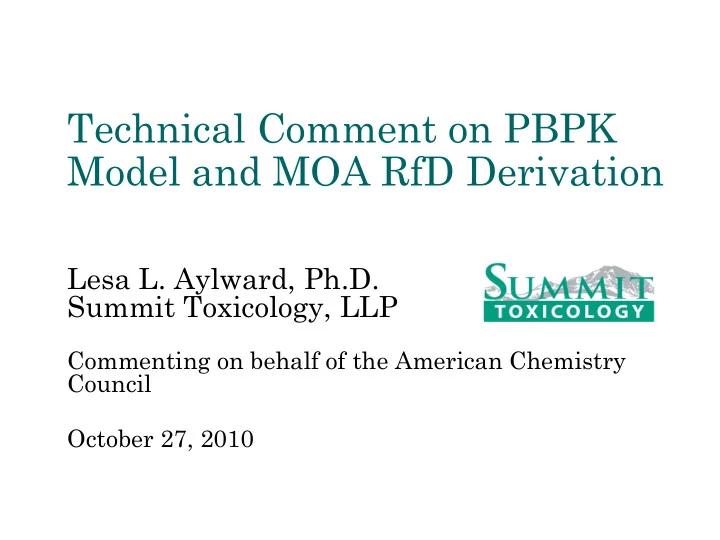

Technical Comment on PBPK Model and MOA RfD Derivation Lesa L. Aylward, Ph.D. Summit Toxicology, LLP Commenting on behalf of the American Chemistry Council October 27, 2010
Acknowledgement � Comments offered on behalf of the Chlorine Chemistry Division of the American Chemistry Council
Overview � Need for detailed QA/QC on quantitative work presented in document � Quantitative issues with PBPK model predictions � Interspecies sensitivity differences for consideration in MOA analysis
Annotated Table 5-21
Quantitative Issues with PBPK Model � CYP1A2 Induction Dose-Response Curve � Fat:Blood Partition Coefficient � Comparison of Model Predictions to Key Data Set
CYP1A2 Induction Dose- Response � As noted at July SAB meeting, Hill coefficient of 0.6 used in model without data support � High quality in vivo dataset is available: � Hill coefficient of 0.94 – affects behavior of model in key low-dose region
Ratio of Fat to Blood Concentrations: Data vs. Model 400 350 Fat:Blood, wet weight 300 250 Emond 200 model 150 prediction 100 50 0 Patterson, Iida, n=8 Maruyama, n=50 n=27
Model Underpredicts Tissue Concentrations in NTP Bioassay
Interspecies Sensitivity: Human Liver Cells Are Less Sensitive than Rat Liver Cells � Many datasets and clear molecular biology basis (reviewed in Conner and Aylward 2006) � For early key hepatic MOA events such as CYP1A1 induction, a Budinsky et al. 2010 data-derived interspecies UF TD factor of 1 or less is justified
Thank you for the opportunity to offer comments
Recommend
More recommend